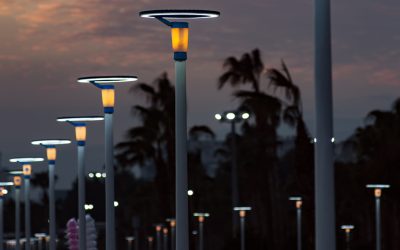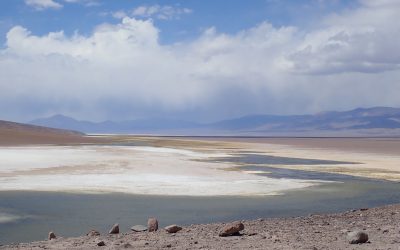
Towards new sustainable frontiers
The world is changing, there is no doubt about that. A change on several fronts, from organic and biodynamic agriculture to the use of new energy sources. A series of initiatives with renewable and sustainable purposes, a sign that man seems to have finally realized that ignoring the use of new energy production systems and postponing their implementation is not really convenient for anyone. Man was born in nature and if he does not act in its full respect, he won’t go anywhere. For some years now, various realities around the world have begun to consider new key solutions for environmental sustainability, setting themselves medium-long term objectives. In Europe, which in recent years has proved to be the most avant-garde continent in terms of “green purposes”, an emblematic example of this is the famous Green Deal, a set of initiatives the European Commission proposed by at the end of 2019, that will be adopted by the member countries of the European Union with the common purpose of hindering the climate change and the environmental degradation, reaching zero climate impact by 2050. Between international agreements and pacts in different parts of the globe, the hope is that of being able to achieve a uniformity of thought for a common global struggle in the name of environmental sustainability, through initiatives ranging from the reduction of greenhouse gas emissions to the defense and repopulation of large forests, the only lungs of our small planet.
What is extremely important is acting on one aspect in particular, a context we have all dealt with for a long time now and we all know very well, even children.
I am referring to the use of fossil fuels, which are all those fuels that derive from the transformation of organic matter, through natural reactions that happen over millions of years. This category of compounds includes coal, petroleum and natural gas, which is mostly represented by methane.
In terms of world energy needs and consumption, petroleum is the main source of energy in the contemporary world, managing to cover 40% of global energy consumption. It is followed by coal, the most widespread fuel in the world, which covers 27% of consumption and natural gas for the remaining 23%.
Coal is undoubtedly the worst fossil fuel, the combustion of which leads to the highest CO2 emissions, which turn out to be 30% higher than those caused by the combustion of petroleum and 40-50% higher than those related to natural gas. Let’s remember that CO2 is, together with methane, one of the main greenhouse gases responsible for the famous “greenhouse effect” with the consequent global warming. Then comes petroleum, the most widely used fossil fuel, to conclude with natural gas that, considering its lower incidence in terms of environmental pollution from combustion, is considered the future protagonist of the energy transaction towards a decarbonised system, the latter one of the main purposes of the “green revolution”.
In fact, in addition to the much lower carbon dioxide emissions in comparison with coal and petroleum, it is important to consider the great advantages of natural gas-fired power plants. These have a very high conversion efficiency (about 60% of the incoming energy is transformed into electricity), their operation is programmable regardless of external conditions, and they quickly come into operation reaching full capacity.
The purpose is to combine this essential “transit” energy source with non-programmable sources, which are those dependent on the external environment and climate. I am referring to solar energy, wind and hydroelectric powers, the use of which is rapidly increasing. Green hydrogen production, about which I will talk later on, can also be an interesting reality.
At the South American level, one country in particular is demonstrating an excellent propensity for the green transaction. I’m referring to Chile.
And Chile is the country I’m going to focus on.

Atacama Desert and Patagonia: the perfect combination
As already clarified in other articles (I particularly recommend reading “The Humboldt Current, Hadley’s Cell and the Föhn Effect – The Perfect Combination), Chile is undoubtedly the country with the most surprising climatic combination on the planet. I am referring to the astonishing climatic stability of the great Atacama desert, whose sands and rocks occupy an area equal to 1/3 of the country. But not only. This long and narrow strip of colored land covers a huge latitude band, extending for almost 4500 kilometers, to the cold and lush Patagonia, one of the most famous regions in the world, known for its scenic and natural beauty, fauna and for the particularly unstable climate. The wind is the real natural force that dominates the green and fresh lands of the south.
So, in summary, constant sun in the north and constant wind in the south, two realities that make Chile the most attractive country in the world for the development of clean energy.
This extraordinary peculiarity of Chile is therefore the key to giving free rein to two of the most important green initiatives. I am referring to the solar energy in the north and to the wind power in the south. For years now the country has been demonstrating a propensity towards the progressive transition to renewable energies, making decarbonization one of its main purposes and thus becoming the leading country of South America towards an increasingly cleaner energy matrix.
The data obtained in 2021 on the production of electricity are proof of this. They show that almost 24% of the national total comes from renewable energy plants: solar, wind, hydroelectric and geothermal. This is a rapidly increasing percentage considering that from 2013 to 2021 the production of energy from renewable sources increased by almost 20%.
The objective of Chile? Creating a 100% sustainable energy system, with the aim of closing all coal plants by 2040 and achieving zero climate impact by 2050.
But what are the projects currently being implemented?
There are dozens of them, scattered throughout the country, most of them belonging to EGPC, the branch of Enel Green Power in Chile. In this article I will only focus on the most revolutionary and emblematic.
The latest updates speak of 44 EGPC projects, for a total of 6139 MW produced, of which 3704 from hydroelectric, 1580 from solar, 785 from wind and 69 from geothermal.
2019 was the turning point for many developing projects in Chile.
I would start from Azabache, EGPC’s first hybrid industrial plant. EGP, which is already active in 30 coutries and whose global objective is leading the transition towards a decarbonised society, is the large Italian company leader in the renewable energy market in Chile that has become a symbol of the management and development of energy production from renewable sources. EGPC’s new photovoltaic solar park, whose construction began in May 2020 near Valle de Los Vientos wind farm about 10 kilometers from the city of Calama, in the Antofagasta region, will be the result of the combination of two renewable technologies, the photovoltaic system and the wind power, thanks to the union with the 90 MW Valle de Los Vientos wind farm, which is operational since the end of 2013. The two-sided nature of the Azabache photovoltaic panels will guarantee, together with Valle de Los Vientos wind farm, an equal energy production to approximately 184 GWh per year, thus avoiding the annual emission of approximately 136,300 tons of CO2 into the atmosphere.
In addition to the Azabache plant, in the Ollagüe district in the heart of the Atacama desert, at 4500 meters above sea level, the supremacy of EGPC has produced one of the most advanced industrial realities in South America. I’m referring to Cerro Pabellón, the first geothermal power plant in South America. The latest project of “Geotérmica del Norte” joint venture, which was stipulated in 2001 between Enel and ENAP, “Empresa Nacional del Petróleo” (The National Oil Company), focuses on the expansion of the plant through the construction of a third production unit, whose construction was started in August 2019. Thanks to this third unit the geothermal plant will be able to guarantee a continuous cycle energy production of 600 GWh per year thanks to the combination of the third 33 MW unit with two other units already in operation, which were inaugurated in September 2017, each with a capacity of 24 MW, for a total of 81 MW. The third unit, which is expected to be built by 2022, together with the other two already operational, will make it possible to avoid the annual emission of 470,000 tons of CO2 into the atmosphere.

The geothermal plant of Cerro Pabellón
This plant once again demonstrates the great potential of the territory occupied by the Atacama desert which, in addition to being a symbol for solar energy, is an excellent source of geothermal energy, offering us the heat coming from the rich sandy and rocky subsoil.
In 2019, the Atacama region was chosen by EGPC for another initiative in the field of photovoltaics, as well as for one of the most majestic projects in Chile. I am talking about the project Campos del Sol, the largest solar plant in the country. The location for the solar emblem was once again the Atacama Desert, about 60 kilometers north-east of the town of Copiapó. The real potential of the plant, which will be operational by 2022, give a better idea of its grandeur: 382 MW of installed capacity, about one million double-sided photovoltaic solar panels (generating on average 12% more electricity than conventional modules), an energy production equal to 1160 GWh per year and 900,000 tons of CO2 less in the atmosphere. The Chilean photovoltaic symbol will have an innovative and digital nature thanks to the use of cutting-edge machinery, which are guided and controlled by a GPS system, and an efficiency and productivity remotely managed and improved through the use of an autonomous drone used for monitoring.

Campos del Sol photovoltaic plant
As you can see, despite the general instability caused by the COVID-19 pandemic, most of the “green” projects launched in 2019 in Chile have not been stopped. Of course, between partial lockdowns and the application of restrictions on movement between regions, a certain slowdown in the renewable energy sector was inevitable, but not decisive.
An example is Cerro Dominador solar thermal and photovoltaic plant owned by EIG Global Energy Partners, a leading institutional investor in the global energy sector. The plant, which is the result of the combination of a Concentrated Solar Plant (CSP) and a photovoltaic system, undoubtedly represents another example of cutting-edge technology in the field of renewable energy, making Cerro Dominador the first plant of its kind in Chile. The EIG solar hybrid, which was built near the city of María Elena, in the Antofagasta region, ensures an energy production of 210 MW, avoiding the emission of 640,000 tons of CO2 per year. The important numbers of Cerro Dominador are the result of the operation of the 392,000 solar panels of the photovoltaic plant with a capacity of 100 MW, which is operational since 2017, together with the 110 MW of the CSP, which consists of 10,600 heliostats and which was inaugurated on 9 June 2021.
The construction of the photovoltaic system, which began in May 2014, was possible thanks to the intervention of the company Abengoa, one of the most important Spanish multinationals in the green infrastructure sector, as well as the engineering and construction company with which ESO (European Southern Observatory ) signed an agreement for the construction of the technical structure of the Extremely Large Telescope (ELT). The CSP plant is the result of an agreement between the companies Abengoa and Acciona, one of the global leader comanies in the development of renewable solutions oriented towards a decarbonised system.

Cerro Dominador solar-thermal and photovoltaic plant
These are just some of the most significant renewable realities that dwell in the great Atacama desert, giving it a very green futuristic note in its colors and boundless landscapes.
But I could add many more.
For example, Chañares and Lalackama photovoltaic plants, both already operational and owned by EGPC, the first with an installed capacity of 40 MW and energy potential of 94 GWh per year and the second with a capacity of 60 MW and capable of generating 160 GWh per year.
But not just solar energy. In addition to Valle de Los Vientos winf farm, the Taltal plant also powers the country’s wind sector. An installed capacity of 99 MW and an energy potential of 300 GWh per year make Taltal the largest wind farm in Chile.

Chañares photovoltaic plant
But let’s move towards more windy and greener areas, in other words towards the cool central-southern territories of the country.
In the Coquimbo region, along the famous Panamericana Norte, the 45 wind turbines of 2MW each make Talinay, with an energy potential of 200 GWh per year, one of the most important wind farms in the country, which is once again owned by Enel Green Power.
But there is a project that, more than any other, outlines the potential of Chilean Patagonia. In Magallanes and Chilean Antarctica Region, which is constantly dominated by the wind, the location chosen for green hydrogen is Punta Arenas, the southernmost city in the country. It is precisely here where the construction of Cabo Negro industrial plant began a few days ago, whose completion is scheduled for the second quarter of 2022. The project focuses on the production of green hydrogen, i.e. hydrogen without carbon dioxide emissions. In fact, let us not forget that, for purely economic reasons, 95% of the hydrogen that is currently being produced is obtained through the direct use of fossil fuels, in particular through steam methane reforming or coal gasification, resulting in the emission of enormous quantities of CO2.
Only 3% of hydrogen production comes from electrolysis powered by renewable energy. Benefits? A totally clean production process. Disadvantages? The costs and difficulties for the construction of industrial plants, an obstacle that fortunately does not seem to be able to undermine the determination of EGP which, together with Siemens, Porsche, Enap and the Chilean Andes Mining & Energy, is the manager of the green project. In this case it will be the energy of the wind to support the electrolysis of the cold waters of the Strait of Magellan. A wind power plant consisting of a 3.4 MW turbine that will power a 1.22 MW electrolyser supplied by Siemens.
Goals? A zero impact hydrogen production of 160 million tons per year.
Once again, Chile will set the example for an increasingly clean and decarbonised system. The real challenge is to make the production of hydrogen, the most abundant element in the universe and the fuel of the stars, cheaper, by reducing the costs of electrolyzers and of KWh from renewable sources. A long-term goal? The world is changing too rapidly to say it is. Wind, solar, geothermal and green hydrogen, the four renewable pillars undergoing rapid development, a clear sign of a necessary and inevitable change towards a healthier planet for all.





0 Comments